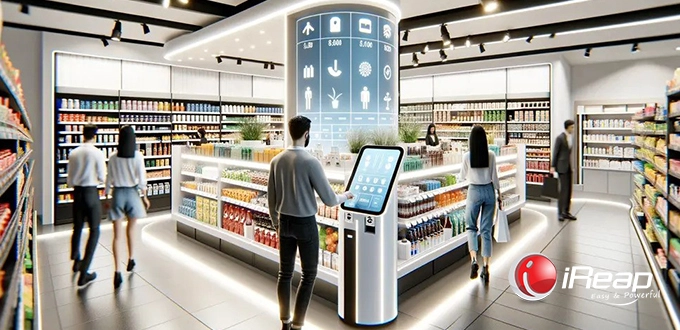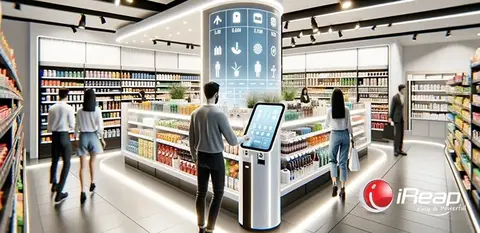
In the ever-evolving realm of retail, proprietors of grocery stores must adapt to various innovations to enhance operational efficiency and deliver a superior experience to their clientele. One such innovation gaining popularity is the concept of self-service, or autonomous service.
With self-service, patrons can attend to their needs independently, sans direct assistance from staff, thereby conserving time and resources.
In this discourse, we shall delve into the essence of self-service, its benefits to grocery stores, as well as strategies for its successful implementation.
Understanding Self-Service
Self-service, or autonomous service, is a method whereby patrons can execute transactions or procure services without direct interaction with store personnel. This concept has existed for several decades and continues to evolve with technological advancements.
Initially, self-service manifested in the form of supermarkets, where patrons selected items themselves and proceeded to checkout.
Currently, self-service encompasses the utilization of technologies such as self-checkout kiosks, mobile applications, and vending machines.
The adoption of self-service extends not only to large-scale retailers but also permeates grocery stores.
By embracing self-service, grocery stores can offer convenience and expediency to patrons, thereby potentially enhancing customer satisfaction and loyalty.
Benefits of Self-Service for Grocery Stores
The implementation of self-service in grocery stores can yield various benefits, including:
1. Operational Efficiency
Self-service empowers patrons to serve themselves, thereby alleviating the workload of staff. This enables staff to focus on other vital tasks, such as maintaining store cleanliness or managing inventory.
2. Labor Cost Savings
Reducing reliance on manual labor can result in operational cost savings. Self-service enables stores to operate with fewer staff, particularly during peak hours, without compromising service quality.
3. Enhanced Customer Experience
Patrons adept with technology will find shopping utilizing autonomous services more convenient and swift.
Self-service also diminishes queue times at checkout, expediting the shopping process and augmenting customer satisfaction.
Implementing Self-Service in Grocery Stores
The adoption of self-service necessitates several preparatory steps and executions, including:
1. Initial Preparations: Necessary Technologies
Initial investments in technology are imperative for implementing self-service in your grocery store.
Point of Sale (POS) applications such as iReap POS provide apt solutions for managing transactions efficiently. iReap POS offers features facilitating inventory management, payment processing, and sales analysis.
2. Staff Training and Customer Education
Staff necessitates training to aid patrons in understanding the usage of self-service systems. Educating patrons through signage, video tutorials, or direct demonstrations is also pivotal to ensure a seamless transition.
Conclusion
Self-service is an innovation that can yield myriad benefits for grocery stores, ranging from operational efficiency to enhanced customer experience.
With judicious investments in technology and robust training, grocery store proprietors can implement self-service to elevate their services and attract a broader customer base.
If you are a grocery store proprietor, contemplate adopting self-service as a strategic step to expand your enterprise and remain competitive in an ever-evolving market.



